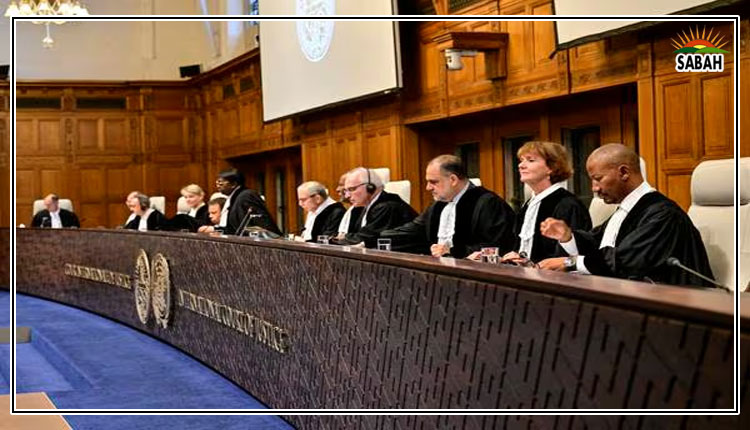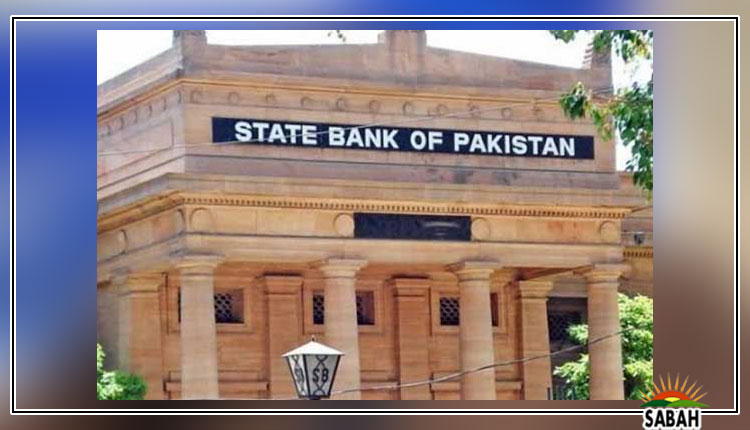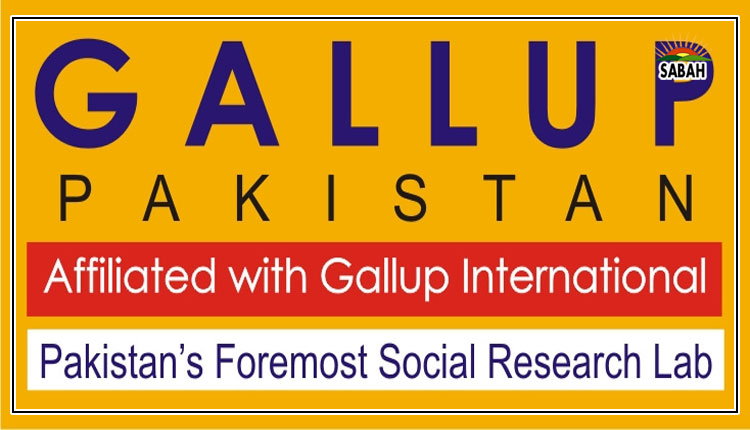In 12 English & Urdu newspapers analyzed for Nov 2022 & Dec 2022 ‘Politics’ & ‘Social,’ ‘Int’l’ & ‘Economy’ issues dominated the space: Gallup & Gilani Pakistan
ISLAMABAD, April 03 (SABAH): According to a Monthly Newspaper Content Analysis Research Study conducted by Gallup & Gilani Pakistan under the supervision of Executive Director, Bilal Ijaz Gilani, the main issues under discussion during November 2022 in the mainstream media belonged to the categories: ‘Politics’, ‘Social’, and ‘International.’ While the main issues under discussion during December 2022 in the mainstream media belonged to the categories: ‘Politics’, ‘Social’, and ‘Economy.’

An analysis of the content of 12 national newspapers consisting of a total of 2912 opinion articles/ columns for November 2022 and 2928 opinion articles/columns written by various columnists for December 2022. This is part of Gallup & Gilani Pakistan Media Research Division’s initiative to empirically understand opinion leaders’ views on national issues. This is the 48th edition of this study. The rest of the editions (dating back to 2015) can be accessed at the following link: http://gallup.com.pk/polls/
Which newspapers have been analyzed?
Out of the 12 newspapers, 5 were Urdu newspapers, namely Daily Pakistan, Daily Express, Daily Jang, Daily Khabrain and Nawa-i-Waqt, and 7 were English newspapers, namely The Express Tribune, Daily Times, Dawn, Pakistan Today, The Pakistan Observer, The Nation, and The News. Main Topics under discussion: Economy, Social, and Politics took priority with Governance not far behind, while discussions related to Sports and Security barely received coverage.
The topics discussed in these opinion articles/columns were categorized into 18 broad themes: ‘Politics’, ‘Security’, ‘Media’, ‘Law and Order’, ‘Economy’, ‘Governance’, ‘International’, ‘Social’,
‘Sports’, ‘Health’, ‘Education’, ‘Religion’, ‘Climate,’ ‘Crime and Terrorism,’ ‘Energy Crisis,’ ‘Miscellaneous’ and ‘Science and Technology’ along with a newly added category of ‘Human
Rights’
Politics, dominated with Social, International and Economy taking priority over the rest while Science and Technology along with Security accounting for the least number of articles. Politics received the most attention with 53% of all articles falling within the category. Social,
International, and Economy, took up 8% of newspaper space each. Followed by these was Climate with 5% articles in November 2022, close behind it was Governance with 4% of articles. Sports, Crime and Terrorism, Education and Miscellaneous articles accounted for 2% each. Health, Religion, Law and Order, Media, Human Rights and Energy Crisis made up around 1% each while articles relating to Science and Technology and Security accounted for less than 1% of newspaper space.
Politics, Social, and Economy took priority with International not far behind, while discussions related to Law and Order barely received coverage. Politics received massive attention in December 2022 with 47% of opinion articles written during the month devoted to the topic. ‘Social’ made up a significant 13%, Economy made up 10%. ‘International’ occupied 6% of newspaper space while ‘Crime and Terrorism’ made up 6%. ‘Governance’ and ‘Climate’ took up 3% of space each, while ‘Human Rights,’ ‘Sports,’ and ‘Health’ were 2% each. ‘Religion’ and ‘Education,’ ‘Energy Crisis,’ ‘Science and Technology’ and
‘Security’ and ‘Media’ made up 1% each. Whereas ‘Law and Order’ and ‘Miscellaneous’ took up less than 1% of newspaper space.
The most drastic changes from November 2022 to December 2022 occurred in the category of ‘Politics.’ While both the issues saw ‘Politics’ to be the dominating category. It decreased by 6% from November to December. ‘Social’ increased by 5% while ‘International’ decreased by 2% from November to December. ‘Economy’ however, increased by 2% while ‘Crime and Terrorism’ increased by 4%. Articles on ‘Governance’ and ‘Climate’ decreased by 2% from November to
December. ‘Human Rights’ and ‘Health’ grew by 1% while ‘Energy Crisis’ ‘Media’ and ‘Religion’ remained the same.
‘Politics’ was the most discussed category in both English and Urdu newspapers. The category of ‘Politics’ dominated both Urdu and English newspapers with a slight difference in the percentage of representation. In Urdu newspapers, it was higher with 29% as compared to 24% in English newspapers. The categories which had a higher representation in Urdu newspapers were: Social – 7% in
Urdu as compared to 1% in English, Governance – 3% in Urdu as compared to 1% in English and Religion with 1% in Urdu and less than 1% in English.
In English newspapers, the categories that had a higher share than in Urdu newspapers were: International with 5% as compared to 3% in Urdu, the same goes for articles falling in the ‘Economy’ category. Moreover, ‘Climate’ also occupied greater space in English newspapers with 3% as compared to 2% in Urdu.
‘Politics’ was the most discussed category in both English and Urdu newspapers. More than 1600 opinion pieces in Urdu were analyzed and the results showed that 27% of the content in them centered around the subject of ‘Politics’. While in the English newspapers the percentage of political opinion pieces came to 21%. The second largest category of opinion pieces in Urdu was Social at 10% while in English
newspapers, the ‘Social’ category consisted of 3% of the overall opinion pieces. The third largest category in Urdu newspapers was ‘Economy’ with 5% opinion pieces. English newspapers had the same percentage of ‘Economy’ pieces as Urdu newspapers.
While all the other categories shared fairly the same percentage of space in both English and Urdu newspapers.
From a total of 2912 articles, 1529 fell within the category of ‘Politics.’ These articles spanned a broad range of topics – from discussions on ‘Local Politics’ ‘Imran Khan and PTI’ ‘Foreign Relations’ ‘Elections’ to ‘Political Philosophy’ ‘Jinnah’s Pakistan’ ‘Army and military’ and ‘East
Pakistan’
Bilal Ijaz Gilani, Executive Director and Chief Editor of this series, explains, ‘The aim of this new series of content analysis of mainstream media (newspapers as well as talk shows) is to understand how public disclosure and agenda-setting happens. Among other issues, once significant monthly data collection happens, we hope to establish a monthly ‘trend’ analysis and see how sensitive Urdu and English newspaper opinion articles/ columns are to changing current issues. It is also hoped that this analysis sheds some light on understanding who sets the agenda and who follows, i.e. whether TV talk shows set the themes for newspaper opinion articles/ columns or vice versa.
Another theme that we hope to explore is to understand who are the opinion leaders/ shapers when it comes to the media. Is there a significant difference in the background of English and Urdu opinion article/ column writers? How does the profile of TV talk show guests vary from newspaper opinion article/ column writers? The overall theme of the research is to empirically understand the Pakistani Media which has undeniably witnessed exponential growth in its numbers, its audience and also improved its legitimacy (and therefore its soft power) in the public sphere.’ We hope that these two studies (newspaper as well as talk shows) and their analysis would help shape a healthy and constructive debate among media practitioners on how the media industry can improve its quality and outreach in the future.
The study was released by Gilani Foundation and carried out by Gallup & Gilani Pakistan, the Pakistani affiliate of Gallup International. The duration of the analysis is November and December 2022. This data was obtained after reviewing 5,840 Op-Eds, spread over 12 newspapers (as mentioned in the third paragraph of this press release).
Gilani Research Foundation is a not for profit public service project to provide social science research to students, academia, policymakers, and concerned citizens in Pakistan and across the globe. Gilani Research Foundation is headed by Dr. Ijaz Shafi Gilani who pioneered the field of opinion polling in Pakistan and established Gallup Pakistan in 1980. Currently Dr. Gilani, who holds a Ph.D. from the Massachusetts Institute of Technology (MIT) and has taught at leading universities in Pakistan and abroad, is Chairman of Gallup & Gilani Pakistan.
Disclaimer: Gallup Pakistan is not related to Gallup Inc. headquartered in Washington D.C. USA. We require that our surveys be credited fully as Gallup Pakistan (not Gallup or Gallup Poll). We disclaim any responsibility for surveys pertaining to Pakistani public opinion except those carried out by Gallup Pakistan, the Pakistani affiliate of Gallup International Association. For details on Gallup International Association see website: www.gallup-international.com












